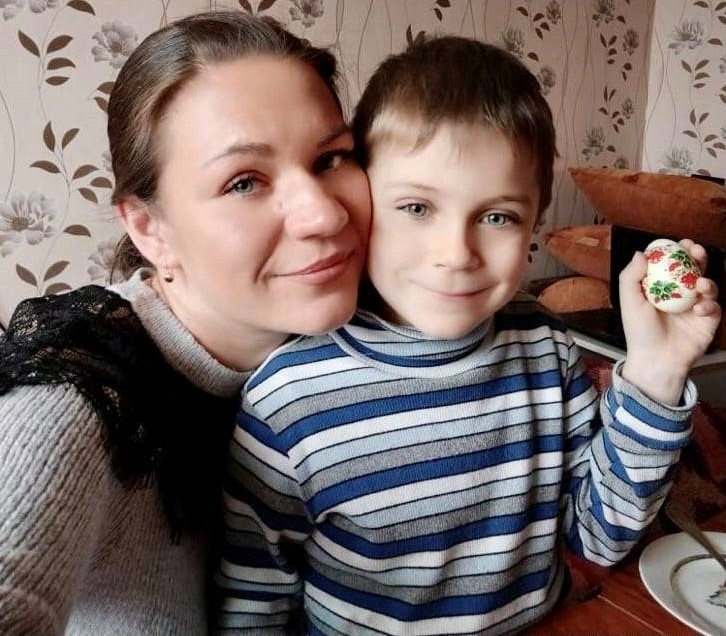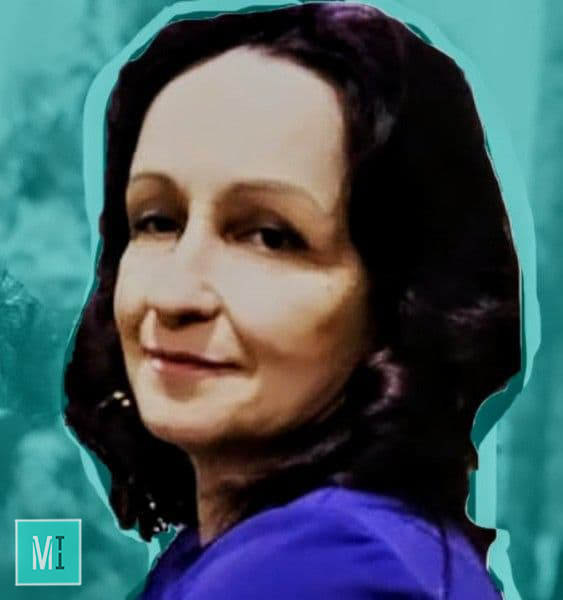Today, 295 people are held hostage in Moscow-controlled Donbas, 30 of them are women, Media Initiative For Human Rights reports. Behind these numbers, are individual stories. Innocent people are taken hostage regardless of age, gender and state of health. Human Rights Watch communicated four known cases of arbitrary detention and torture of women in Russia’s marionette “Donetsk people’s republic” (or “DNR.”) They are now experiencing serious health issues. One of the women is in her sixth month of pregnancy. Euromaidan Press now tells their stories.
Do these four cases have anything in common?
The specific details of why these women were detained remain unknown. What is known is that each of these women was arrested on the same fabricated espionage allegations. This is no coincidence. According to the Russian Code of Criminal Procedure, when “criminal proceedings before a court may result in the disclosure of State or other information,” it is possible to hold a closed trial. And espionage cases fall under this category of hearings. Without the prying eyes of independent journalists, Russian kangaroo courts can easily breach criminal procedure and pressure defendants with the intention to keep them behind bars. This can be observed in the case of Valentyn Vyhivskyi, a Ukrainian citizen and Euromaidan activist. In 2014 he was seized in Crimea, tortured into issuing a false confession, then wrongfully imprisoned in Russia for the alleged collection and dissemination of information containing Moscow’s state secrets.
Russia’s vile attempts to discredit the Crimean Tatars must not be kept silentThese four women’s relatives share what they know of their family members' detention.
Oksana Parshyna, 35 y. o.

“We very much hoped that officials of the “MGB” [an initialism for a Soviet Ministry of State Security; here in the meaning of “a respective body of the self-proclaimed entity”] would figure out all circumstances, recognise their mistake, and let [Parshyna] go. But this did not happen despite the pregnancy,” said one of Oksana’s relatives.
Nataliya Statsenko, 43 y. o.

“I will not live to see the next trial,” said 43-year-old seriously ill Nataliya Statsenko to the lawyers in one of the mock hearings of her case.Nataliya is a dermatologist at a hospital in Makiivka, a city in Donetsk Oblast in eastern Ukraine. Seven years prior to her arbitrary detention on July 10, 2019, by enemy combatants, Statsenko suffered from pain in her neck, back, and legs. She underwent repeated treatment but her condition further deteriorated. In June 2019, Nataliya was diagnosed with exacerbation of general spinal osteochondrosis with herniated disks and significant dysfunction of static and dynamic functions of the spine. The doctors said she needed surgery, but it was never able to happen because the following month pro-Russian militants detained Statsenko. Nataliya’s father Oleksandr recalls her arrest: “On that day Nataliya went to work like always — left home at 7 am, as she had to ride from Donetsk to Makiivka. Around 11 am, the head doctor of the clinic called me and asked, “Oleksandr Borysovych, where is Nataliya?” I said, “What do you mean, she went to work.” And he said again, “She is not at work.” Oleksandr and his wife began to search for their daughter. Sometime later, it was discovered that Nataliya had been arrested by “The Ministry of State Security” members of the so-called “DNR.” Unidentified personnel and civilian witnesses came to Statsenko’s home to conduct a search to extract her phones and other electronic devices. Nataliya was also present at the search. Two days later, they called to tell Statsenko’s family she had been placed in custody for alleged “pro-Ukrainian activities.” Following the administrative arrest, criminal "espionage" charges were filed against Statsenko. Nataliya was held in detention in the afore-mentioned Izolyatsia, then transferred to detention facility № 5 in Donetsk.
Izolyatsia is a former art center and now a secret prison within the territory of a military base in Russia-occupied Donetsk (Donbas). Predominantly civilian detainees who end up in Izolyatsia’s eight cells, two punishment boxes, and two basements are held in incommunicado detention, compelled to perform work against their will, and tortured.
Donetsk art center turned into concentration camp: former hostages share their memoriesAccording to Stanislav Asieyev, a journalist covering life in occupied Donbas and a former prisoner of the Kremlin, Nataliya was detained after the “authorities” in Donetsk gained access to his social media accounts. He commented:
“She was thrown in a basement only for communicating with me. Now this woman is suffering from daunting health issues: she needs spinal surgery. We have repeatedly raised this matter within TKH [Trilateral Contact Group on Ukraine of representatives from Ukraine, the Russian Federation, and the Organization for Security and Co-operation in Europe established to facilitate a diplomatic resolution to the conflict in the Donbas region in Ukraine], formed a list of 11 people who really need urgent medical treatment, and proposed her release for humanitarian reasons.”Nataliya has been subjected to psychological pressure, former hostages told her father. He comments on his daughter health state:
“It is difficult to realize that my daughter is held behind bars, has serious health issues and I, her father, cannot help. For two years, I have been figuring out the way to release Nataliya, but to no avail. I am much concerned with her health as I am a doctor myself and am fully aware of the consequences. While before captivity she suffered from severe back pain and could seek medical aid, while in confinement she does not receive adequate and qualified medical treatment for her conditions. For two years, my daughter has been compelled to take nonsteroidal anti-inflammatory drugs to somehow take away the pain. But one cannot take such drugs for a long period of time as they have side effects — lead to a stomach ulcer, cirrhosis of the liver, hypertonic disease, and thyroid illness. And Nataliya already has such complications. She also had a seizure in the spine and limbs, headaches, and her left foot is paralyzed.”On 30 August, a court is scheduled to hear Nataliya’s case. Ukraine’s Ombudsman invited a representative of Special Monitoring Mission OSCE to Ukraine to attend the “trial” to monitor violations of Statsenko’s procedural rights.
Olena Zaitseva, late forties

Depriving detainees of crucial medical care may be equated to torture, as the European Court of Human Rights ruled on numerous occasions. One of them is the case Ilascu and Others v Moldova and Russia (2004) when four detainees were held in a dire prison environment that deteriorated their health but they did not receive adequate medical care. The Court likened such treatment to torture.
And in the case Jasinskis v. Latvia (2010), the Court ruled that by failing to medically examine the detainee prior to taking him into custody, the state breached the European Committee for the Prevention of Torture standards.
Olha Mozolevska, 35 y. o.

“Olia [short name for “Olha”] disappeared suddenly in mid-October 2017. I don’t know the exact date because my wife was in Donetsk by herself and dropped out of contact around 15 October,” said Olha Mozolevska’s husband Vitaliy.For more than three years, Olha’s close family have been unaware of her whereabouts. Olha and Vitaliy come from Avdiivka, Donetsk Oblast. When the conflict started, they moved to Marinka Raion within the Ukrainian-controlled region of Donetsk Oblast. Vitaliy said they fled “where they would shoot less as we had a little son.” A cook by profession, Olha soon found a new job as a waitress, and later as a manager at a restaurant in Donetsk where she would go for a few weeks and then return home. Without warning, Olha disappeared from contact and did not pick up her phone for a few days. Olha's husband, Vitaly, searched exhaustively for his wife until he eventually found that she was being held captive in a basement under a false identity. Vitaly received calls from Donetsk in which the person on the other end of the phone invited Vitaliy to visit the Russia-occupied city regarding his missing-person report on Olha. However, the caller refused to identify themselves. As the State Security Service of Ukraine told Vitaliy, a manipulative attempt by the “DNR” authorities to coax him and pressure his wife. According to Ukrainian human rights activists, Olha Mozolevska was held in isolation in Izolyatsia for four years.
First public photos of Russian-run Donetsk concentration camp leaked onlineInformation about her only became known when former detainees who were released in prisoner exchanges in December 2019 and April 2020 contacted her husband Vitaliy. One of the Kremlin’s former Ukrainian hostages Oleksandr Tymofieyev identified Olha in a photo as someone he saw during their imprisonment. He told the Media Initiative for Human Rights about forced labour in the prison:
“I was made to perform domestic work on the territory of Izolyatsia… Every time we worked together, around 10-12 men. We removed snow, leaves, dug the ground, and whitewashed trees. Usually, we were watched by a few guards. Several times during work I saw a young woman who worked in the kitchen and canteen for the guards. She is a skinny young woman, 30 years old, blond hair in a ponytail, with an exhausted face. We probably wouldn’t have paid attention to her, [we] worked with our eyes downcast, if not for one of the guards who sometimes shouted so that we did not stare at her when she took out the trash or stood on the kitchen doorstep.”One of the former prisoners called Oleksandr Tymofieyev to inform him that Olha had never seen a detective nor had she been interrogated. Olha was not even aware of the exact accusations that held her there. Most likely, they concerned “espionage.” The released prisoners also confirm Olha was subjected to torture with the aim of extracting a false confession. When she refused to “admit to” spying, the security service agent would beat her across her body and face and smash her against the wall. An investigator would walk in and repeatedly ask, "Why is there blood on your face? Did you fall? Now will you tell the truth?” Eventually, Olha “confessed.”
Torture and humiliation: freed Ukrainians talk about Donbas captivityVitaliy explained that a few weeks prior he had heard his wife's voice for the first time in four years when she was taken to another detention facility. She did not disclose any details about her detention and condition, her husband said. And added: “She’d also asked me to save money because she said she would need a lot of medical treatment.”
From 2014 to 2021, around 4,000 detainees (3,400 men and 600 women) were victims of torture and abuse in Russia-occupied Donbas, including 340 victims of sexual violence, the UN reports.
Related:
- I survived the basement prisons of the “Luhansk People’s Republic.” Here is what I saw. Part 1
- I narrowly escaped death in dungeons of the “Luhansk People’s Republic.” This is what saved me. Part 2
- Surviving the “DNR/LNR”. Photo project reveals the horror of captivity
- These four stories show anybody can be jailed in occupied Donbas (and you, too)
- A businessman, nurse & food technologist: stories of three civilian hostages in occupied Donbas
- War crimes in occupied Donbas: every second prisoner tortured, 16% witnessed executions
- A month of freedom: released hostages tell about captivity and torture in occupied Donbas
- “Russians taught how to torture.” Ex-captives of Donbas “republics” share horrors of basement prisons
- “Our men are rotting alive!”- say wives of Ukrainian POWs held in “DNR/LNR”

